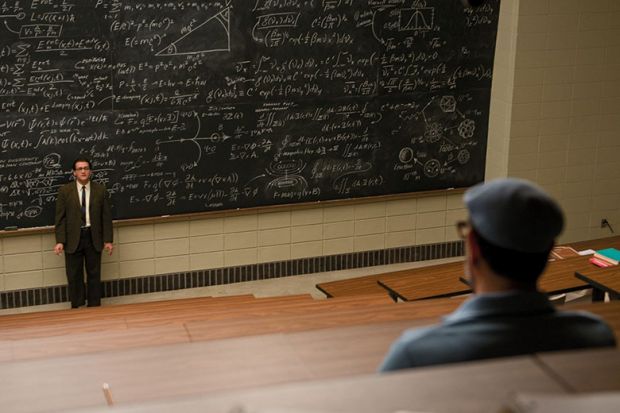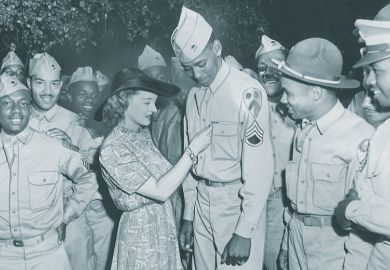The “two-headed monster”, as long-time collaborator John Turturro affectionately calls brothers and film-making partners Joel and Ethan Coen, emerged from nowhere in 1985 with Blood Simple. They have since gone on to make 16 more movies. This big, beautiful book, chock-full of information, analysis and photographs, coupled with interviews with their collaborators, is one that any fan of their films, or indeed film aficionado, would be proud to own. Tying it all nicely together is the narrative supplied by its author, Toronto film critic Adam Nayman (who also teaches film studies in university).
Nayman begins by selecting an image from A Serious Man (2009) as a microcosm of the Coens’ oeuvre. In it, untenured physics professor Larry Gopnik stands before his lecture class. He is dwarfed by an enormous chalkboard covered in its entirety by a convoluted mathematical proof (as I think about it, I wonder if it is entirely correct and about who wrote it). This “single most indelible frame in any movie by the Coen brothers”, Nayman argues, sums up the “cosmological complexity” of their universe, a dizzying array of intertextual, self-referential and hypertextual associations that loop back and forth across their movies, creating a “Grand Unifying Theory of Coen-ness”. Although Nayman uses the term only once in the whole book, and then only about A Serious Man, taken together the Coens’ films can accurately be described as “Talmudic”.
Like the Creator whose words and works are intricately analysed and debated in the Talmud, Nayman attributes levels of infallibility to the Coens. “The next visibly imprecise camera placement or sloppy dialogue cue in their work”, he avers, “will also be the first.” And, as any Talmudic scholar knows, fully getting their films requires immersion in lore and history. In this respect, Nayman’s book provides an excellent primer for finding a pathway through what he calls “a massive muscular body of work”. Luckily for me as a scholar of Stanley Kubrick, his presence looms large over their films. As Nayman writes, “Like no director since Stanley Kubrick – ‘one of the few filmmakers whose shadow falls over Joel and Ethan’s playground,’ says the American critic and programmer Kent Jones – they are obsessives who calibrate their frames and soundscapes down to the millimeter.” On Barton Fink (1991), for example, they would say, “Think Kubrick!”
If I have any points of disagreement, it is that the Coens’ Jewishness could have been plumbed more extensively, not least how it crops up in Miller’s Crossing, Barton Fink, The Big Lebowski and A Serious Man. Specifically, I was disappointed not to see any reference to Walter Sobchak’s legendary speech in The Big Lebowski (1998) about his refusal to go bowling on the Jewish day of rest: “I don’t work, I don’t drive a car, I don’t fucking ride in a car, I don’t handle money, I don’t turn on the oven, and I sure as shit don’t fucking roll!…Shomer fucking shabbos.”
The other place where I disagree with Nayman’s judgement is that he finds Burn after Reading (2008) “really, really funny”. But, in true Coen-esque style, it is fitting and proper to end with the immortal words of The Dude: “Yeah, well, you know, that’s just, like, your opinion, man.”
Nathan Abrams is professor of film studies at Bangor University and the author of Stanley Kubrick: New York Jewish Intellectual (2018).
The Coen Brothers: This Book Really Ties the Films Together
By Adam Nayman
Abrams, 320pp, £30.00
ISBN 9781419727405
Published 11 September 2018
Register to continue
Why register?
- Registration is free and only takes a moment
- Once registered, you can read 3 articles a month
- Sign up for our newsletter
Subscribe
Or subscribe for unlimited access to:
- Unlimited access to news, views, insights & reviews
- Digital editions
- Digital access to THE’s university and college rankings analysis
Already registered or a current subscriber? Login








